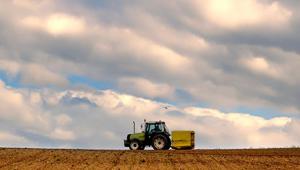In an early review of the Common Agricultural Policy delivery programme, the NAO found the scheme has been hindered by numerous changes in leadership, with four senior responsible owners within the space of a year.
The new process, called Rural Payments, was created in 2012 to address failings in how the government previously delivered subsidy payments and to reflect the increased complexity of the CAP following changes to the scheme.
However the scheme, developed between the Department for Environment, Food and Rural Affairs, the Rural Payments Agency and the Government Digital Service, had originally been too narrow in scope, auditors said. It had mainly focused on procuring IT systems and did not set out the wider organisational transformation required to improve payments to around 88,000 farmers and agents.
Changes in leadership of the programme were disruptive, while DEFRA failed to prevent counter-productive behaviours, including dysfunctional working relationships and inappropriate behaviour at the senior leadership level.
In addition, GDS did not provide the support needed by the department after the Cabinet Office applied spending controls in 2013. Following this, the online application system was withdrawn in March this year, its first year of operation, and replaced by “paper-assisted digital” applications for 2015 scheme payments.
Auditors also found that a focus on resolving immediate issues has diverted attention from long-term goals of improving the service to farmers and improving land data issues that are causing the UK to be penalised by the European Commission.
Auditor general Amyas Morse said Defra, the RPA and GDS had not worked together effectively to develop the scheme.
“There are serious lessons in this episode for all three,” he said.
“This means that costs have increased and systems functionality has not improved at the rate expected, either in the back office or the user-facing front end. This does not represent value for money at this stage.
“One consequence of this is that the department faces difficulties paying farmers accurately and at the earliest opportunity.”
Responding to the report, a government spokeswoman said: “The new Common Agricultural Policy is widely acknowledged as the most complex ever and a new IT system was needed to handle this additional complexity and to make claiming as simple as possible for farmers.
“While there was a problem with one part of the online interface that enabled farmers to put data directly into Rural Payments, the system has always worked and has successfully started making accurate payments to thousands of farmers on the very first day of the payment window. The Rural Payments system will be further improved next year to make it easier for farmers to apply for their CAP payments.”












